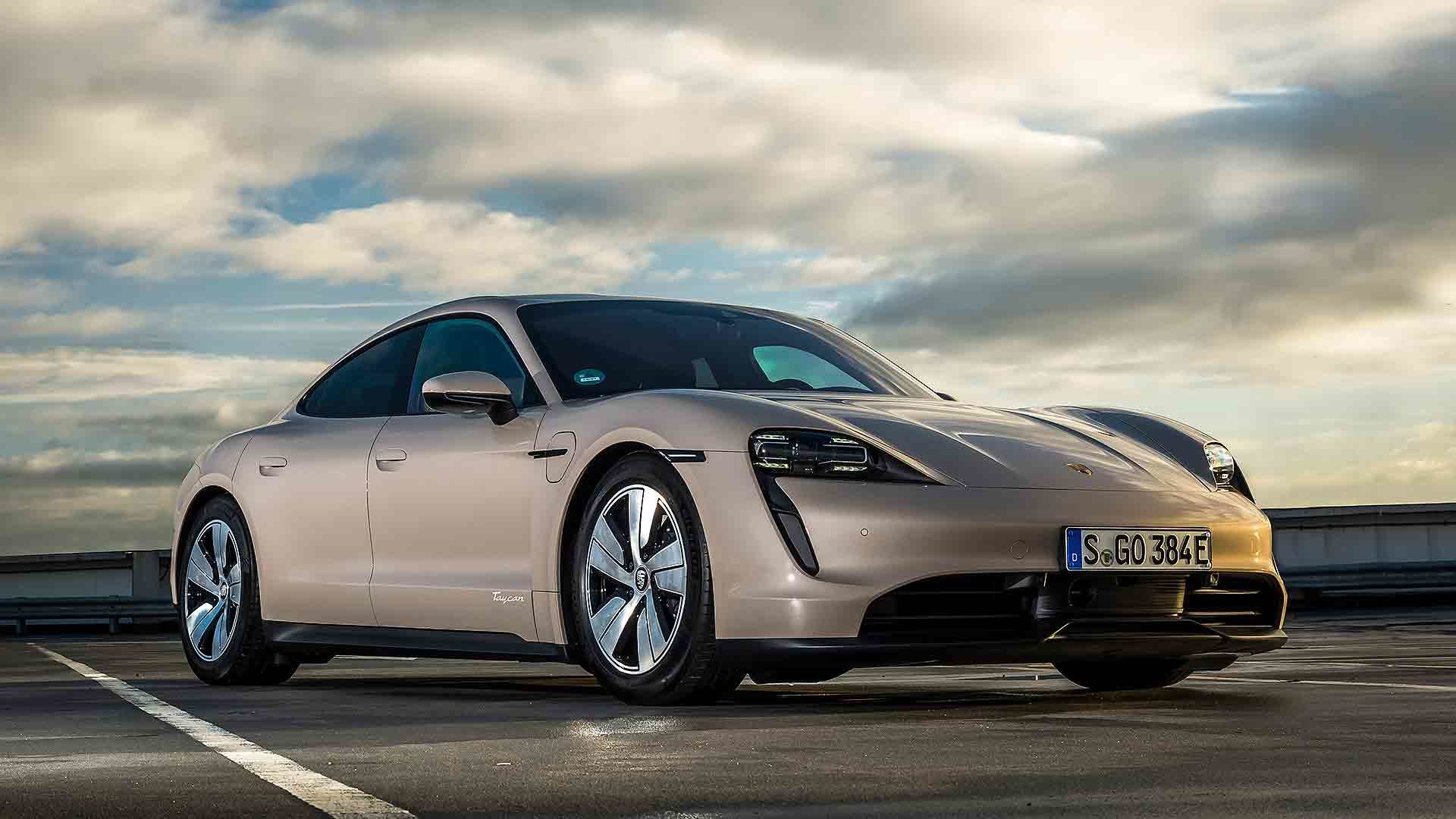
The Porsche Taycan electric car is on a roll. Just a year after launch, the four-door sports car has become the firm’s second best-seller in the UK (after the Macan SUV), and that’s with a range of decidedly high-end models.
With the Taycan rear-wheel drive, the firm aims to bring on board even more buyers with its most affordable variant yet – its £70k list price a full £13k less than the incumbent all-wheel-drive range.
Better still, as it doesn’t have all its wheels driven, it’s more efficient, delivering a range of up to 301 miles with the top-spec 93.4 kWh battery (79.2kWh is standard). For a car producing up to 476hp, and capable of 0-62mph in 5.4 seconds, that’s very good going.
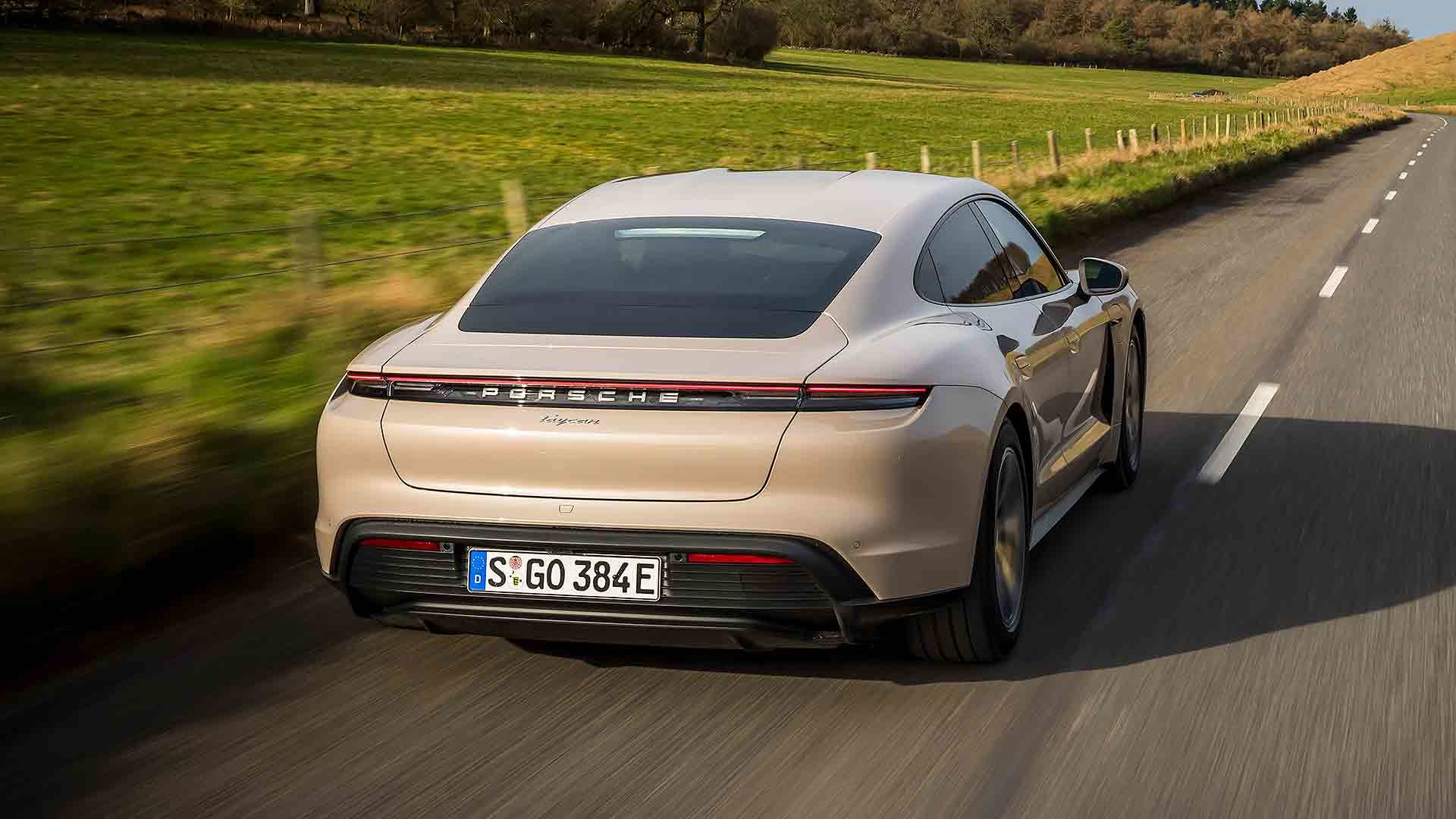
It’s going to worry Jaguar, that’s for sure; the Taycan is within striking distance of the I-Pace SUV, which costs from just over £65,000. The coupe-like Audi E-Tron Sportback is just under £70,000 and a Mercedes-Benz EQC is from £66,000 – but they’re all SUVs.
Only the Porsche is an authentic four-door with coupe-like styling and the promise of handling to match. Like, you know, a Tesla Model S, which has a 412-mile range, hits 60mph in 3.1 seconds… but costs from £84,000. To Porsche GB HQ then, to find out if what sounds like the sweet-spot of the Taycan range really is.
Porsche Taycan rear-wheel drive: First impressions
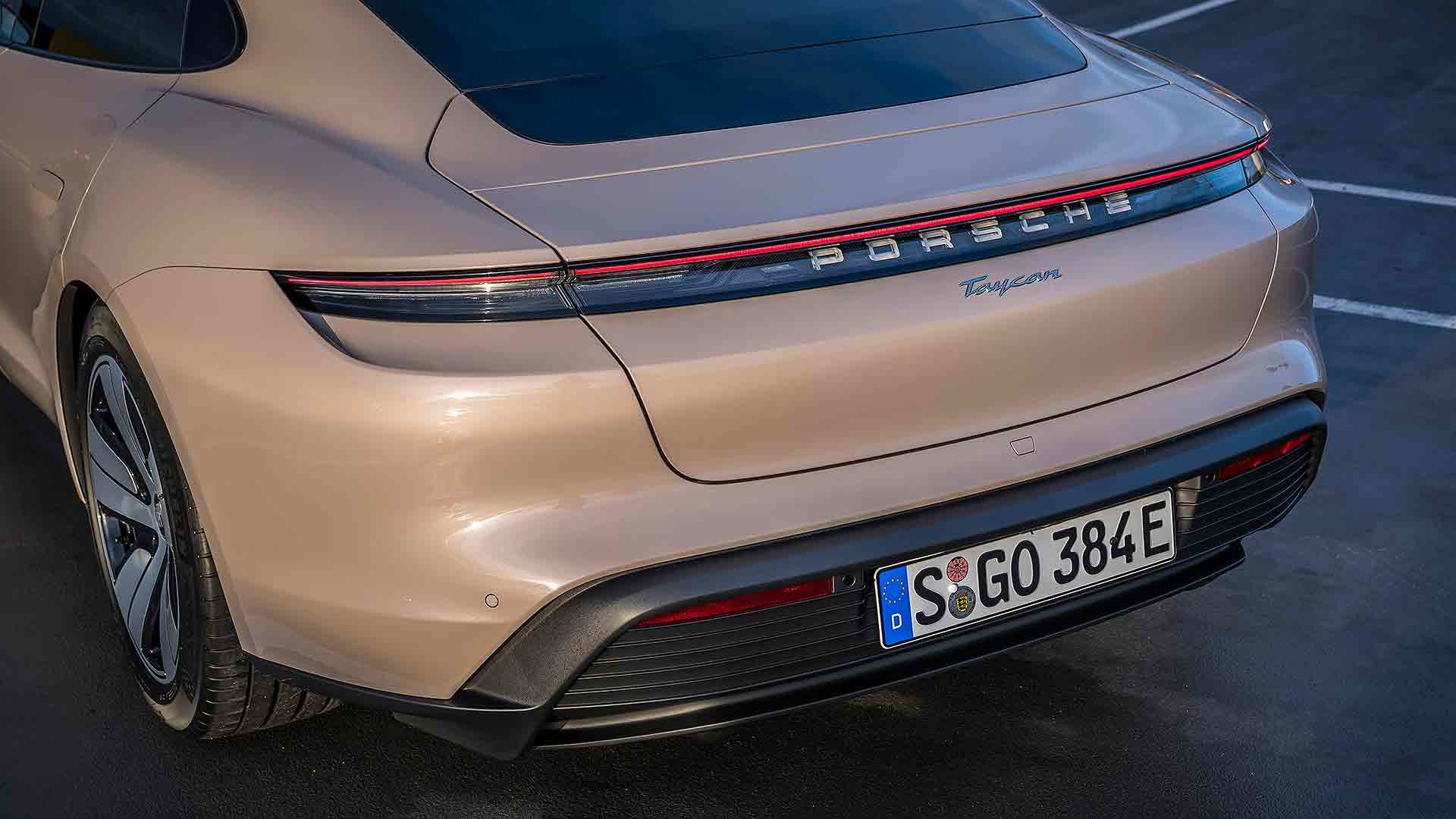
Technically, it’s just called ‘Taycan’, sitting alongside the Taycan 4S, Turbo and Turbo S. Being rear-wheel drive marks it out as the only one not to drive the front wheels, too. You probably won’t even realise if you don’t look at the badge on the bootlid; visually, Porsche confirms that, other than 19-inch aero wheels and black anodised brake calipers, it’s identical to the 4S.
It measures nearly five metres long and nearly two metres wide, yet is 82mm lower than a Ford Fiesta, giving it a strikingly low-slung, road-hugging appearance. In a world of six-foot-tall SUVs, this is refreshing, and the drama is accentuated by the Taycan’s bold creases and plunging coupe roofline. It makes a Porsche Panamera look heavy and almost 2D in comparison.
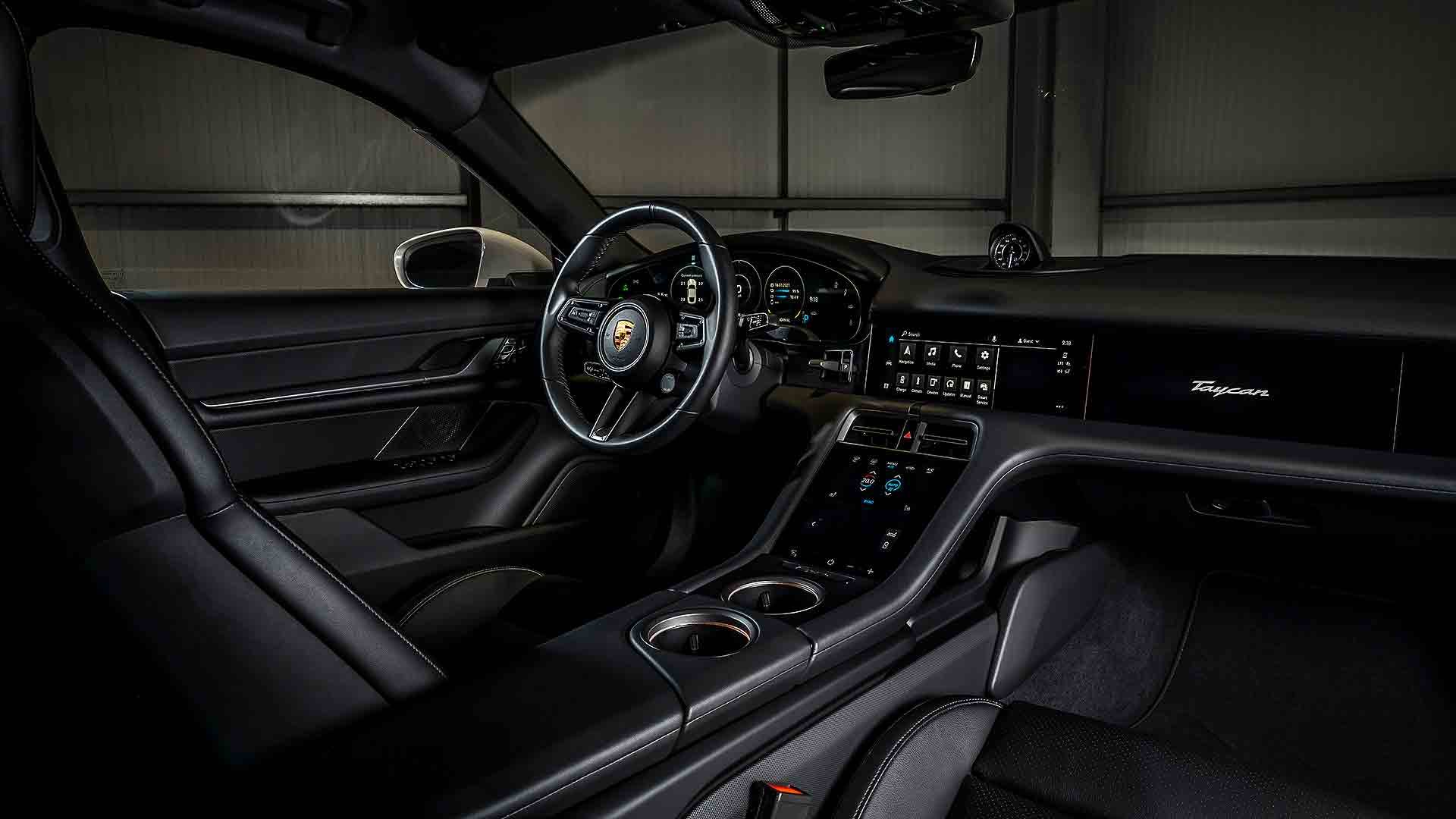
The bucket-style seats are set fairly low, too, which isn’t easy to achieve given how the occupants are sitting on the batteries. The dashboard is also low, and the wide windscreen gives a great view forward – including the curvaceous front wings, a bit like a Porsche 911.
The interior is dominated by high-resolution screens. The portrait-format climate control panel in the centre has haptic feedback, but is fiddly, while the widescreen display above it is more intuitive. My test car had the optional passenger screen, too.
My favourite is the curved, frameless instrument display, modelled on a Porsche 911’s famous dials but given an EV makeover. Instead of a rev counter in the middle, there’s a power/recuperation dial.
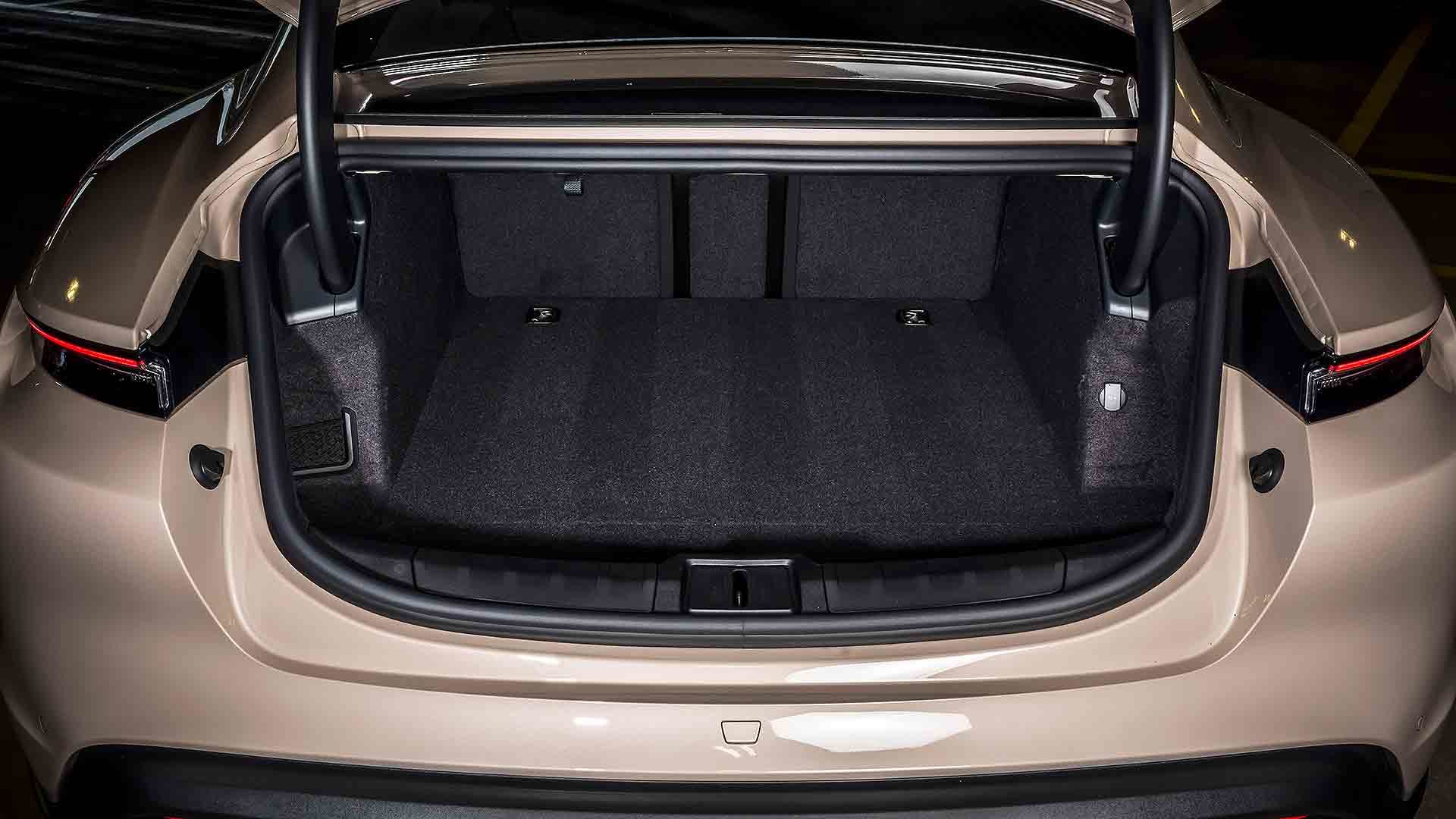
In the rear, it looks cosy at first – so you’ll be surprised at how easy it is to step in and out. There’s decent room there, and it’s certainly adult-friendly (even if headroom will be tight for the tall). The seat itself, shaped for two, is very comfy.
Behind, a small bootlid hides a shallow but long 408-litre luggage area, and there’s an 84-litre boot in the front as well… just like a Porsche 911.
Porsche Taycan rear-wheel drive: Driving impressions
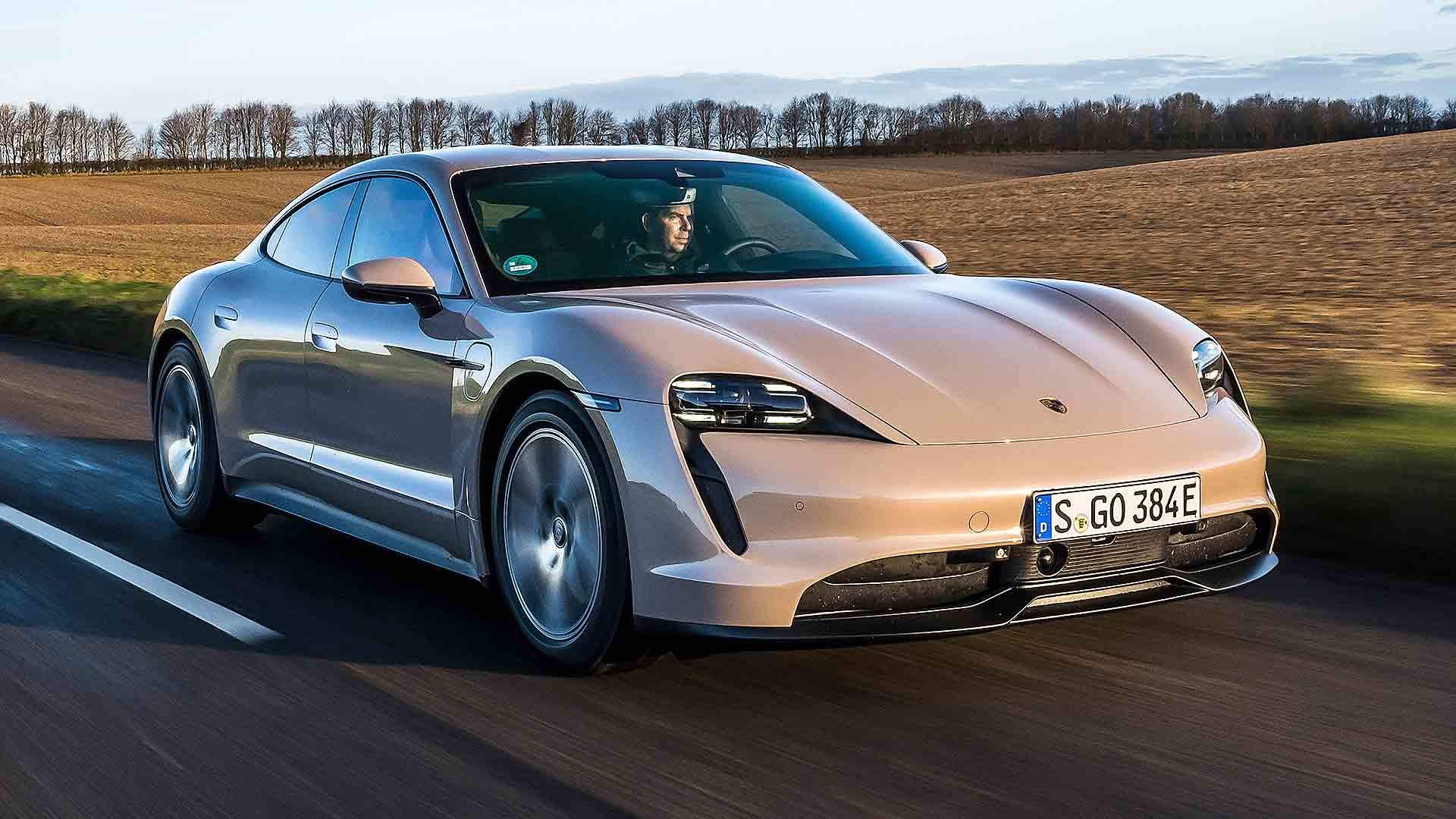
The Porsche Taycan has similar motor on the rear axle to the Taycan 4S. It also uses a two-speed transmission, instead of the single-speed gearbox of many EVs. The front wheels are completely free to do their own thing, uncorrupted by the need to deliver EV-exceptional levels of surging drive to the road.
Fantastic refinement is what strikes you first about this sporting-looking electric car. The motor, mounted way back behind you, is near-silent (unless you turn the sound generator on – more later), and both road and wind noise are incredibly hushed. With a soothing, compliant ride from my test car, which was fitted with optional air suspension (regular steel suspension comes as standard only on this variant), it felt divine.
The wheels pick out minimal road surface irritation, giving a waft-along feel on the motorway, and on rough A-roads the ride remains supple. Even dialling things up to Sport and Sport Plus doesn’t bring in much extra crashiness – and turning it back to Normal restores all the feelgood plushness.
If you use Launch Control (easily done: just press the brake and accelerator together until you get confirmation on the dashboard, then release the brake and you’re away), peak power is 476hp with the high-spec, £4k-extra Performance Plus battery. Even in normal use, though, 380hp is still sent to the rear wheels – in a sophisticated and controlled way.
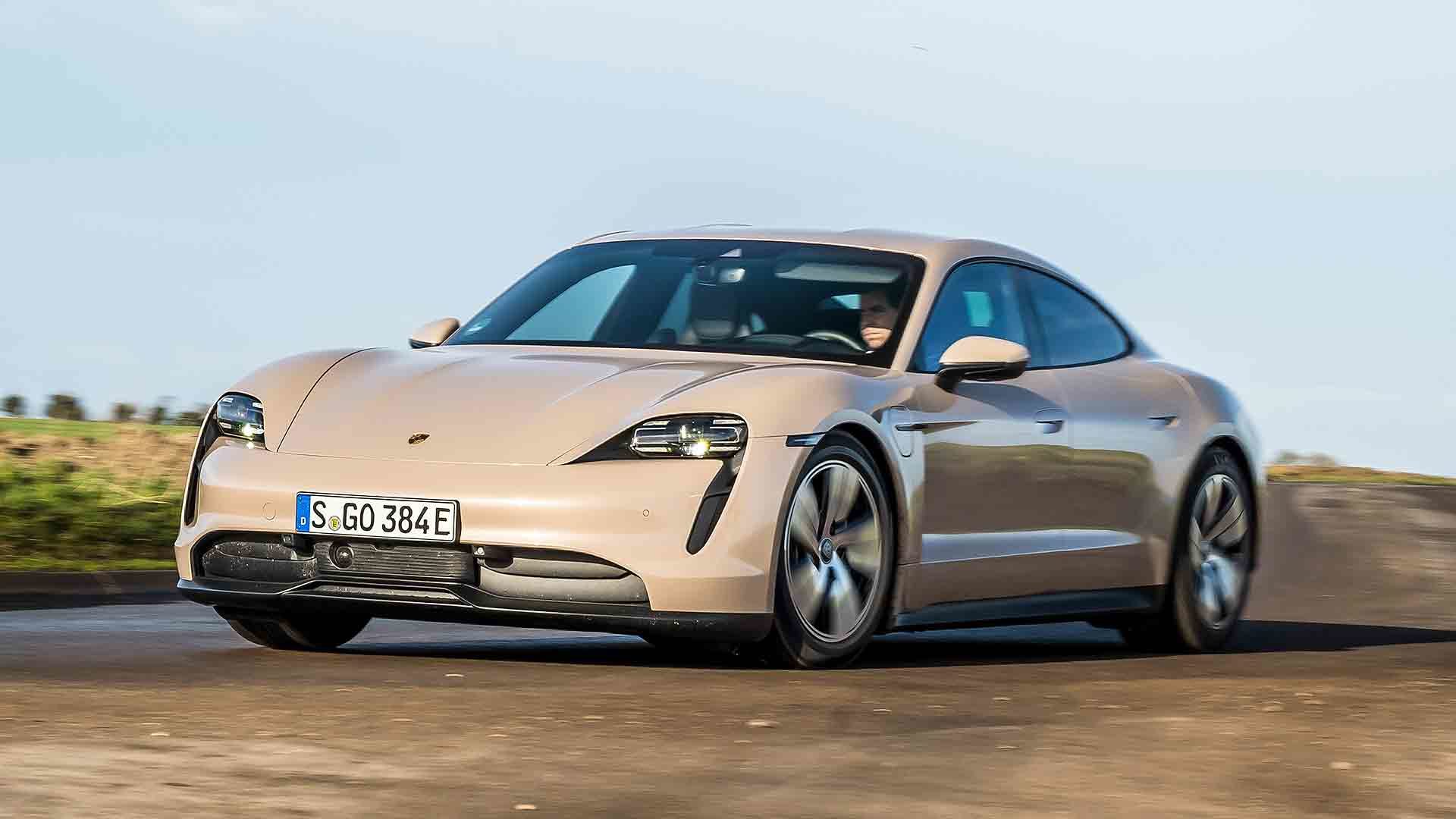
It’s a fast, potent car, but doesn’t feel like you’re about to be sent into space in the way a Tesla does. What’s more, the rear wheels have good traction and bite. It is much more reliant on the traction control than the all-wheel-drive versions, but the alert, unobtrusive electronics work in as discreet a way as possible.
It’s actually surprisingly satisfying and engaging, booting it and feeling the wheels slipping just on the edge of grip, serving up as much drive as is physically possible. This also really underlines the rear-driven feel – you sense the back end biting – to set it apart from almost any other EV.
My test car had rear-wheel steering, and I developed the knack of going tight into a bend, using the wheel to steer the back end, then going hard on the power. Instant torque to the rear wheels gave a pleasing ‘power-steer’ feel – within the control of ESC, of course. On a circuit, with ESC off, it’s going to be incredibly good fun.
For a 2.1-tonne car, the Taycan feels surprisingly light on its feet. The front end turns in eagerly, and the steering itself is brilliantly confident and linear – all that’s missing is the ‘chatter’ you get from a 911. And, shorn of some front-end mass, you at times sense a hint of ‘nose bobble’ over the front wheels. Just a tease, but just enough to bring in some more 911 sports car vibes.
I even quite liked the artificial noise. It can be turned on via a setting in the infotainment screen. These things are usually grim, but this one is rather pleasant on the ear – a mix of high-tech EV and the haromonious hum and exhaust throb of a flat-six 911. Like a real engine, its tone and intensity changes according to what your foot’s doing on the accelerator. And when you turn it off, it’s like the engine has shut down: silence returns.
Porsche Taycan rear-wheel drive: Verdict
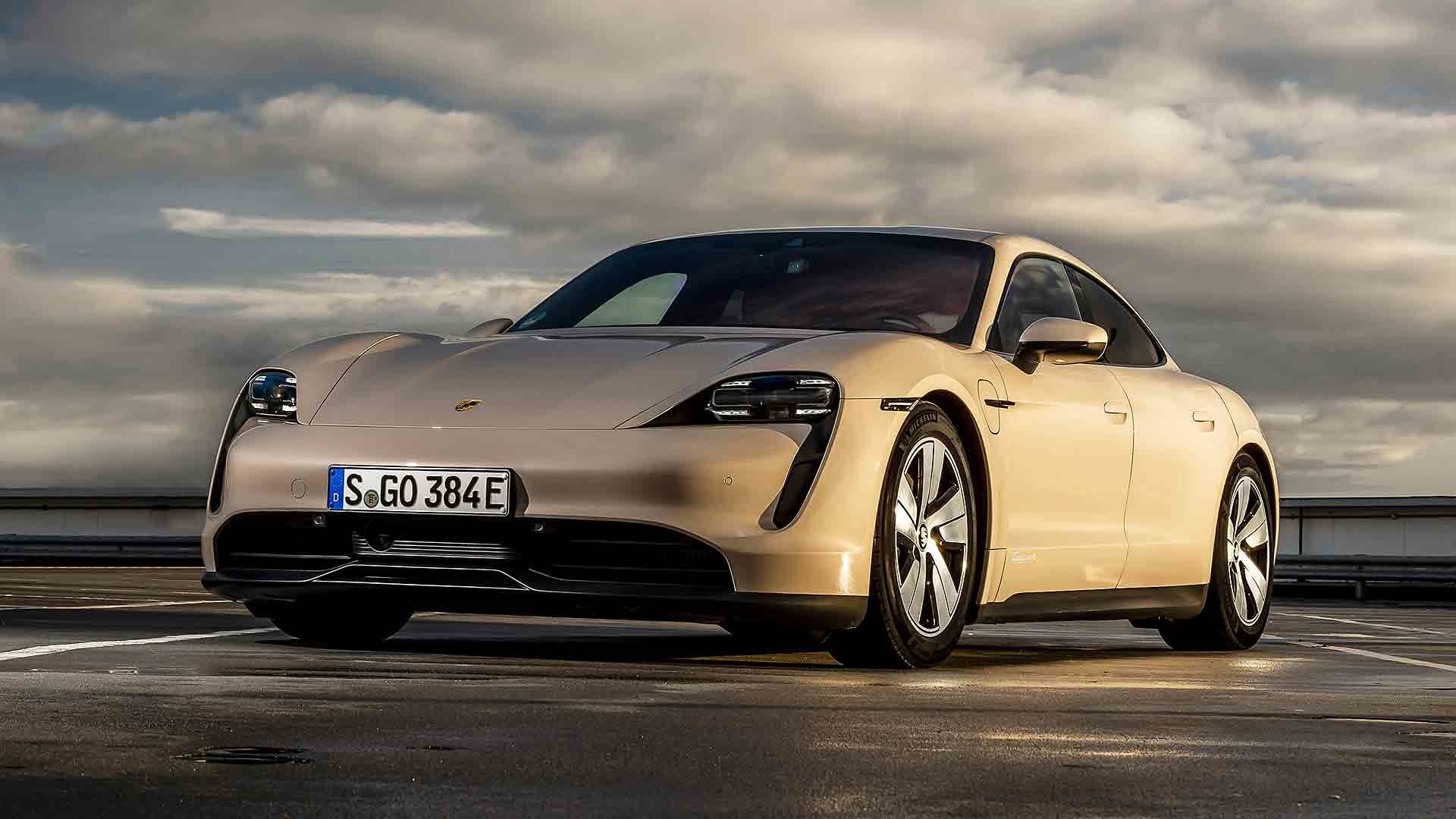
The Porsche Taycan rear-wheel drive is a particularly refreshing electric car. It proves EVs can still be organic and futuristic in a positive way, rather than seeming over-swift, over-sharp and strange. The pricier versions do the true rocketship stuff, albeit still with the fine breeding of this one. The Taycan rear-wheel drive is the engaging and approachable one.
This is Porsche at its best, giving us a beautifully considered driver’s car that’s also high-end in everyday use and a spectacle for others to look at. That it has the best range of any Taycan, and the lowest list price, seals it for me.
READ MORE:
Porsche Taycan Turbo (2021) review
Porsche Cayman GTS 4.0 (2020) review
Porsche Boxster at 25: a history in pictures